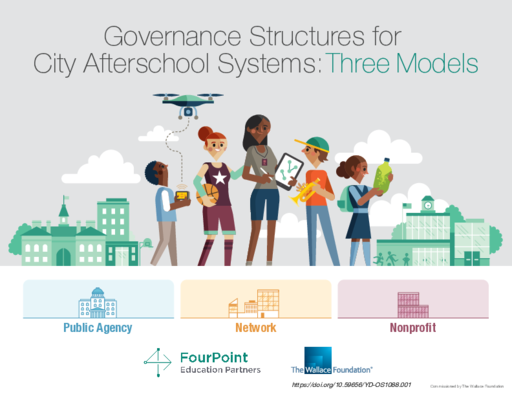
Breadcrumb
- Wallace
- Reports
- Governance Structures For City A...
Governance Structures for City Afterschool Systems
Three Models

Overview
More
Less
- Publisher(s)
- FourPoint Education Partners
Summary
At least 77 of the nation’s 275 largest cities are home to afterschool systems, which coordinate the work of program providers, municipal agencies, schools, funders and others in the afterschool orbit. The hope is that a system can create a whole larger than the sum of its parts, providing children, especially the disadvantaged, with more and better opportunities when the school day ends.
Given the many institutions and individuals involved, however, how are afterschool systems best governed? And where should they be based?
This brief report says there is no one-size-fits-all answer, but describes three models for governance that emerged from the authors’ research and observations and that cities can consider:
- Governance based in a local government agency, such as a mayor’s office;
- Governance housed in a nonprofit organization; and
- Governance from a networked arrangement tapping several different institutions.
The report was written by consultants from the FourPoint Education Partners firm, formerly Cross & Joftus, which spent five years providing technical assistance to cities taking part in a major Wallace initiative to help communities build afterschool systems. The brief, which provides an infographic depicting the three models, draws from sources including interviews with leaders from 15 cities with afterschool systems, including participants in the Wallace effort.

